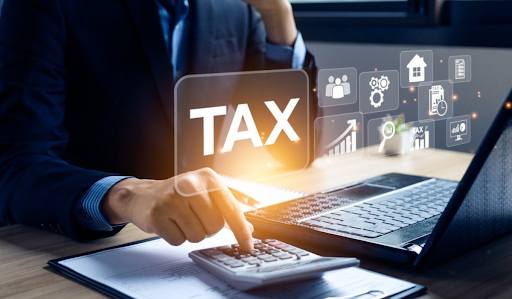As the year draws to a close, Shopify store owners must shift their focus from sales and marketing to tax preparation. Proper year-end tax planning is crucial to ensure compliance with tax regulations, maximize deductions, and avoid penalties. Whether you are a seasoned eCommerce entrepreneur or new to running an online store, understanding how to file taxes for a Shopify store can make the process smoother and less stressful.
This guide will walk you through the essential steps to prepare for year-end taxes, helping you stay organized and optimize your tax savings.
1) Organize Financial Records
Organizing financial records is one of the most crucial steps in preparing for year-end taxes. Keeping accurate records helps avoid last-minute stress and ensures a smooth filing process. Shopify store owners should –
- Reconcile sales reports with bank statements.
- Review income and expense reports.
- Organize receipts and invoices.
- Ensure accurate bookkeeping in accounting software like QuickBooks, Xero, or Wave.
Proper record-keeping is essential for identifying deductions and avoiding errors when filing taxes for an eCommerce business.
2) Review Sales Tax Obligations
Sales tax compliance is a major concern for online businesses. Shopify does not automatically remit sales tax, so store owners must –
- Determine their sales tax nexus (states where they must collect and remit sales tax).
- Verify that the collected sales tax amounts are in Shopify’s tax reports.
- File sales tax returns based on state deadlines.
- Consider using tax automation tools like TaxJar or Avalara for easier compliance.
Failure to comply with sales tax regulations can result in penalties, making it crucial to review obligations before year-end.
3) Calculate Business Deductions
Year-end tax planning includes identifying deductible business expenses to reduce taxable income. Common deductions for Shopify businesses include –
- Cost of Goods Sold (COGS) – Expenses related to purchasing inventory.
- Shipping and Packaging Costs – Packaging supplies, and shipping software fees.
- Marketing and Advertising – Costs for paid ads, email marketing services, and social media promotions.
- Software and Subscriptions – Shopify fees, accounting software, and other digital tools.
- Home Office Deduction – You may be eligible for a home office deduction if you work from home.
Proper documentation of these expenses is key when filing taxes for a Shopify store.
4) Understand Income Tax Obligations
E-commerce business owners must report their earnings to the IRS (or relevant tax authorities) based on their business structure –
- Sole Proprietorship or Single-Member LLC – Report business income on Schedule C of Form 1040.
- Partnerships – File Form 1065 and provide partners with Schedule K-1.
- S-Corporations and C-Corporations – File corporate tax returns (Forms 1120S or 1120).
Shopify businesses earning over $20,000 in sales and processing more than 200 transactions may receive a 1099-K form from their payment processor, which must be reported on tax returns.
5) Estimate and Pay Quarterly Taxes
Many Shopify business owners are required to pay estimated taxes quarterly. These payments cover income and self-employment taxes to avoid underpayment penalties. The IRS has four estimated tax payment deadlines throughout the year –
- April 15
- June 15
- September 15
- January 15 of the following year
Checking with a tax professional ensures accurate estimated payments based on income.
6) Verify Employee and Contractor Payments
If your Shopify store has employees or independent contractors, tax forms must be issued –
- W-2 Forms – For employees, to report wages and tax withholdings.
- 1099-NEC Forms – For contractors paid over $600 during the year.
Ensuring proper classification of workers helps prevent IRS audits and penalties.
7) Plan for Retirement Contributions
Contributing to a retirement plan can reduce taxable income. Shopify business owners may consider options like –
- SEP IRA – Suitable for self-employed individuals and small business owners.
- Solo 401(k) – Ideal for sole proprietors looking to maximize contributions.
- Traditional or Roth IRA – Available for individuals with earned income.
Tax-advantaged retirement contributions can provide significant savings and financial security.
8) Work with a Tax Professional
Tax laws can be complex, and Shopify entrepreneurs may benefit from consulting a tax professional. A CPA or eCommerce accountant can –
- Ensure compliance with federal and state tax regulations.
- Identify tax-saving opportunities.
- Provide guidance on structuring the business for tax efficiency.
Working with a professional simplifies tax filing and reduces the risk of costly mistakes.
9) Plan for Next Year’s Tax Strategy
After filing taxes, Shopify store owners should evaluate their financial performance and make strategic decisions for the next year. This may include –
- Adjusting pricing strategies to improve profitability.
- Implementing better expense tracking systems.
- Exploring new tax deductions or credits.
Effective tax planning ensures a smoother process in future tax seasons.
Final Thoughts on Preparing Year-End Taxes for Shopify Store
Filing taxes for an eCommerce business doesn’t have to be overwhelming. Shopify store owners can simplify their tax process by organizing financial records, reviewing sales tax obligations, and maximizing deductions. Following these essential steps for year-end tax planning ensures compliance, minimizes tax liability, and helps businesses thrive. For the best results, consider working with Fully Accountable’s tax professionals to navigate complex tax laws and optimize financial outcomes.
Frequently Asked Questions
Shopify store owners must report their earnings to the IRS based on their business structure. Sole proprietors report income on Schedule C, while partnerships, S-corporations, and C-corporations have different tax filing requirements. Additionally, those earning over $20,000 and processing 200 or more transactions may receive a 1099-K form from their payment processor.
You can reduce your tax liability by claiming business deductions such as Cost of Goods Sold (COGS), marketing expenses, software subscriptions, and home office deductions. Additionally, making retirement contributions and working with a tax professional can help identify more tax-saving opportunities.
Yes, Shopify store owners must determine their sales tax nexus and collect sales tax accordingly. Shopify does not automatically remit sales tax, so businesses must file sales tax returns based on state regulations. Tax automation tools like TaxJar or Avalara can help streamline sales tax compliance.
To file taxes for your Shopify store, collect sales reports, track expenses, and determine sales tax obligations based on your location and customers’ locations. Use Shopify’s tax settings or third-party apps to calculate sales tax. File your returns with the IRS and state agencies, or consult a tax professional for accuracy.


